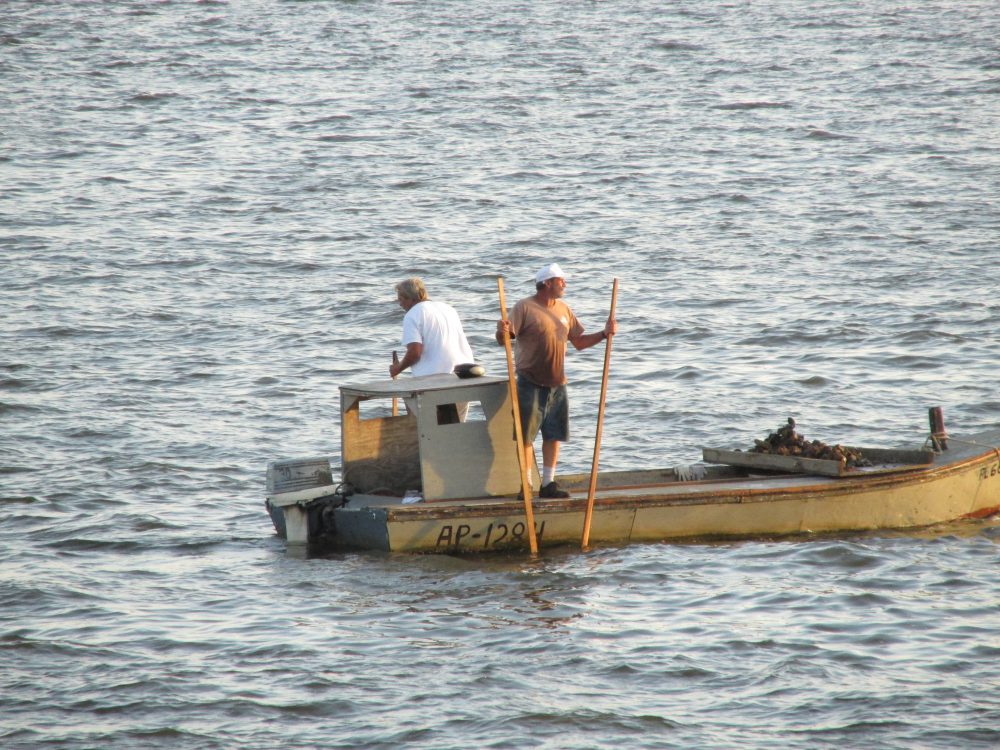
by Rick O'Connor | Feb 18, 2017
In his 137-page report to the U.S. Supreme Court published on Valentine’s Day, a Special Master appointed to oversee the case has stated, “Because Florida has not met its burden, I recommend that the court deny Florida’s request for relief.” This may not be the final word on the matter but it does sound like the “bottom line” as the highest court in the land will lean heavy on his recommendation when they rule on the case in the days to come. So, will this be the end of the decades-long battle over water rights in the Apalachicola-Chattahoochee-Flint River Basin? Considering the magnitude of what is at stake when it comes to this “Dixie-Style” water war, I seriously doubt it.
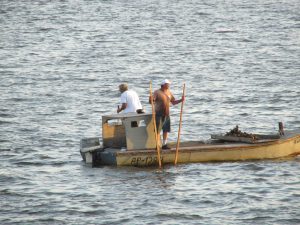
Hard working Apalachicola oystermen are finding times tougher with the “water wars” problem.
Photo: Erik Lovestrand
Florida argued for years that Georgia was illegally using water from its reservoir in Lake Lanier for unauthorized purposes according to the legislation that allowed the dam to be built in the first place. When that argument fell through during prior court rulings, the state sued claiming harm to the once prolific oyster fishery in Apalachicola Bay that has sustained a near total collapse that began in 2012. Florida contended that reduced freshwater flows tied to increased human needs upstream and sustained drought in the southeast had resulted in higher average salinities in the Bay, which added stressors (disease, parasites and predators), causing the crash.
Proponents of Florida’s case were ecstatic when the highest court in the land agreed to hear this case, following denials to do so in the past. Proponents on Georgia’s side of the case claimed that there was no proof that reduced flows had caused the crash and instead blamed poor management of the fishery for Florida’s woes.
Special Master Ralph Lancaster largely agreed with Florida’s assertions on the cause of the fishery disaster but still ruled against Florida’s request for relief saying that the evidence based on low flows during drought periods did not prove how a cap on Georgia’s water use during other times would provide the relief requested. Special Master Lancaster also hinted that Florida had made a grave mistake in not naming the Corps of Engineers as a party in this dispute. He said “Because the Corps is not a party, no decree entered by this court can mandate any change in the Corps’ operations in the basin.”
Georgia officials are breathing a sigh of relief as the economic impact to their state would have been substantial if this had not gone their way. On the other side of Lake Seminole at the State line, Florida’s resource managers still worry about what they can do to improve conditions in a struggling estuary on the Gulf Coast, once known locally as the “Oyster Capital of the World.”
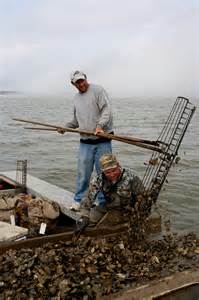
by Rick O'Connor | Nov 18, 2016
I was trying to think of a topic that could connect Thanksgiving and our marine environment. Like many others, when I think of Thanksgiving images of Pilgrims and native Americans come to mind. There is the turkey – and I wrote about “turkey fish” (another name for lionfish) last year. So I continued to think. One thing I do know about the native Americans who lived in this area, they liked oysters. We find middens (piles of oyster shell) in many places around the Gulf coast. These were discard piles from their consumption of the animal. Lots of these indicate, at least to me, that they enjoyed them… and we do also. Oysters are a part of Gulf coast culture and many have them with their Thanksgiving meal.
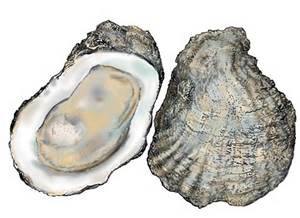
Oysters are one of the more popular shellfish along the panhandle.
Photo: FreshFromFlorida
Oysters are animals – meaning they lack cell walls and must consume their energy. The food of choice is plankton, sounds good doesn’t it! They possess two tubes called siphons which basically filter seawater. One brings water in, the other expels it. As the water enters their body they filter it for food and oxygen. As it leaves they expel waste and carbon dioxide. At times sand is sucked in and becomes lodged – they cannot expel. This “irritant” is covered by a material called nacre and becomes a pearl. Most are not round nor pretty but occasionally there are nice ones… Pacific oysters make better pearls. Amazingly a single oyster can filter up to 20 gallons of water in a day during the warmer months.
They are invertebrates and belong to the phylum Mollusca – meaning they have a soft body. Many invertebrates have a soft body, but what makes mollusks different is that they have bilateral symmetry (a head and tail end), a coleomic cavity (which allows organ development and increased size), and unique to them is a tissue called a mantle (which can secrete a calcium carbonate shell – and most mollusks do this).
Oysters are in the class Bivalvia – meaning they have two shells connected by a hinge at a point called the umbo. Other bivalves include the clams, scallops, and mussels. All of these are popular seafood products. Oysters differ from other bivalves in that they are cemented to a structure and cannot move around (sessile). Many mussels are sessile also but oysters differ in that they use calcium carbonate to literally cement themselves to the substrate, where mussels use a series of threads to do this. Cementing to the substrate means that they are picky about their habitat – it needs to have a hard substrate, sand will not do. We all know this. Place a piling, clay pot, board, or boat in the water… and oysters find it. Typically, they will attach to each other and form small clumps of oysters. These clumps form larger structures we call oyster reefs (or oyster bars) and this is what the commercial oysterman is looking for – and the recreational boater is trying to avoid!
So how do these oysters, who are sessile, find these habitats? Well, when it is time to reproduce oysters (which are hermaphroditic) release their gametes into the water. The sperm and egg that find each other form a planktonic larva called veliger. To increase the chance of finding each other the oysters release their gametes at the same time – a mass spawn. There are a variety of factors that trigger this but water temperature seems to be an important one. The veliger drift in the currents, developing into juveniles, and then settling out as small oysters called spat. If the currents have brought them to a good location, the spat settle on a hard substrate and the next generation begins. If not, they die. So literally millions of fertilized veliger are produced from individual adults. In many cases the suitable substrate are other oysters.
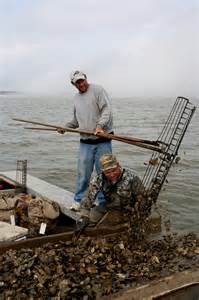
An oysterman uses his 11 foot long tongs to collect oysters from the bottom of Apalachicola Bay
Photo: Sea Grant
Today oysters seem to be in trouble. Large bars have disappeared due to dredging and over harvesting. Hurricanes certainly do damage to some and poor water quality alters their growth and development. Recently problems in Apalachicola include the lack of river water reaching the Gulf. The higher salinities created by the reduction of river flow have increased the number of oyster predators (starfish and snails) as well as diseases. All of that said, they are still a popular seafood item and enjoyed by many during the holidays. The cooler months mean less bacteria in the water and fewer problems consuming them raw. Cooked oysters have few problems… period.
I hope all have a Happy Thanksgiving and if you have not tried oyster dressing, maybe this year could be the year.
Happy Holidays.

by Rick O'Connor | Oct 7, 2016
It’s October and it feels great outside. Time to fire up the grill and enjoy football with your favorite local seafood. So what’s in peak season this month?
Clams – cultured Cedar Key clams are always in season and can be purchased at some local markets.
Oysters – they like the cooler months, there are a lot of ways to prepare them but we recommend cooking them
White Shrimp – other varieties of shrimp are not in peak season at this time but still available
Spiny Lobster – the Florida (Spiny) lobster is still in peak season but more available in south Florida
Stone Crab – we are JUST entering peak season for these guys, but like lobster – they are more common in south Florida.
Flounder – a local favorite this time of year – we are in peak of peak season – enjoy.
Mullet – This is a local favorite with those along the Florida panhandle.
Snapper – these are in peak season year round, but harvesting regulations reduce their abundance at the markets – so you will need to check.
Yellowfin Tuna – these have been in peak season for most of the summer; we are on the down side of it.

The Striped Mullet.
Image: LSU Extension
SPECIES OF THE MONTH…. MULLET
This is one of those – “either you love them or you hate them” fish. It is not news that these are not a popular food fish in much of the Gulf region. In some locations that have an oily/muddy taste that does not appeal to many. In those areas the fish is still abundant but is used as bait. They are an oily fish and are preferred fried or smoked when fresh. Mullet that sit too long develop a strong fishy taste. Mullet roe has its fans… and its enemies. Andrew Zimmern (Bizarre Foods) – did not care for them. They were very popular in the Orient for a period of time, and the local mullet population suffered for it, but that fad has waned.
We actually have 3 species found in the northern Gulf. There are two that frequent the estuaries – the white and the striped mullet. As the name implies, striped mullet does have body stripes as adults. They grow a little larger than the whites and are the one of choice for eating. At times though, the stripes on the striped mullet are hard to see. What then?… well – the white mullet has 9 soft rays on their anal fin, the striped have 8… have fun counting those. Another way is to look at the operculum (the bony plate covering the gills). On FRESH mullet, the white will have a gold spot here that is missing on the striped. The iris of the white mullet has a gold stripe that runs vertically… on the striped mullet the entire iris is gold.
Both species are what we call euryhaline – meaning that can tolerate a wide range of salinities. Striped mullet have been found several hundred miles inland and in Baffin Bay TX (where the salinities can reach 70 ppt). The white mullet prefer saltier habitats and do not frequent the upper estuaries and rivers. White mullet gather and spawn in the spring, striped mullet spawn in the fall – both spawn offshore on the continental shelf.
If you have not tried fried mullet, or smoked mullet dip, give a chance and see what you think. As always – enjoy our local seafood.
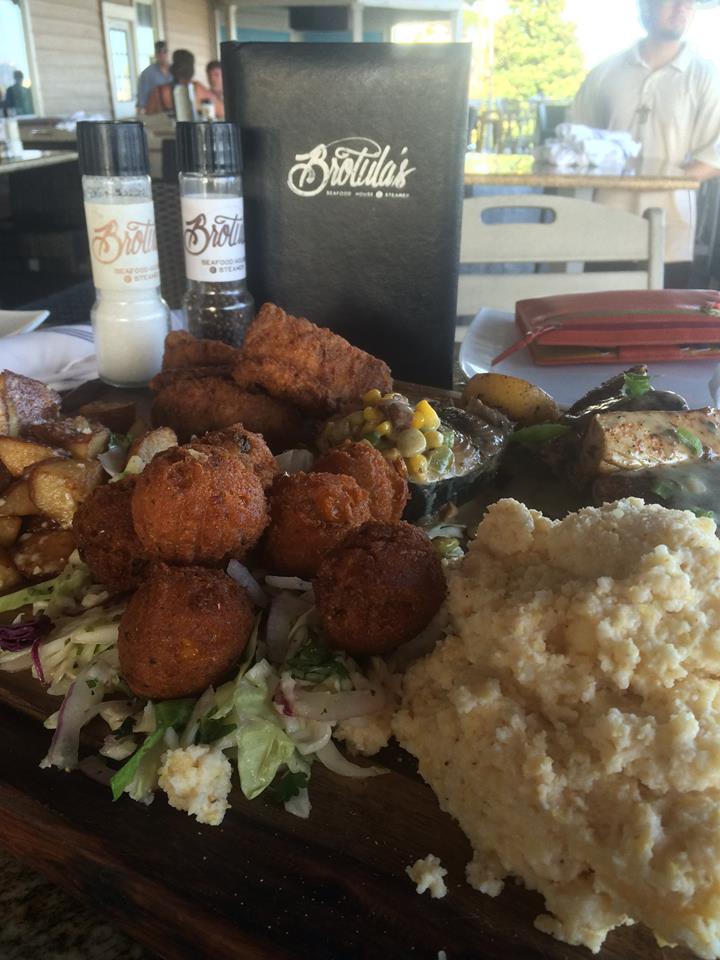
by Laura Tiu | Oct 7, 2016
I’ve spent the past 25 years studying and growing fish. When folks find out I’m a fish head, I often get a lot of questions about the safety and sustainability of many seafood products. It seems that the media and other groups have done a good job of scaring and confusing the American public to the point that some forgo consuming seafood altogether. That is such a shame because seafood is great for human health. Seafood is typically high protein, low in fat and calories and bursting with good for you stuff like omega-3s.
Seafood is either wild caught, aquacultured (farm-raised), or both. Both wild fisheries and aquaculture have their pros and cons. Overfishing, illegal fishing, bycatch, habitat degradation and lack of effective regulation have led to declines in wild fisheries. Aquaculture has been plagued with claims of pollution, disease and escapees. With all this negative press, what is the consumer to do?
You can choose your seafood based on its sustainability. Sustainable seafood has been caught or farmed in sustainable ways. And there are several groups today that make choosing these sustainable product easy. Once such group is the Monterrey Bay Aquarium. Their Seafood Watch program makes it easy for you to choose seafood that’s fished or farmed in ways that have less impact on the environment.
Using science-based criteria and input from fisheries and aquaculture experts, Seafood Watch has developed standards and guiding principles to develop consumer friendly guides. The guides are specific to each state and there is even one for sushi. These printable guides fit easily into your wallet so that you can use them anytime you purchase seafood. The guide shows with seafood items are “Best Choices” or “Good Alternatives,” and which ones you should “Avoid.” They also have an app for android and IPhone making it easier than ever to get the latest recommendations for seafood and sushi, learn more about the seafood you eat, and locate or share businesses that serve sustainable seafood.
As consumers, we have a lot of power in the seafood marketplace. With over 75% of the world’s fisheries either fully fished or overfished, we need to make smart choices about the seafood we buy and consume. By supporting fisheries and fish farms that are working hard to limit their impact on the environment we help protect the seafood we love. By using the seafood guide for your region, you’re making choices based on the best available information and supporting environmentally friendly fisheries and aquaculture operations.
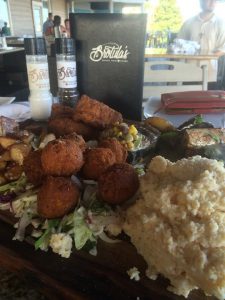
Brotula’s Restaurant in Destin, Florida will cook your fresh catch to perfection.

by Scott Jackson | Jul 2, 2016
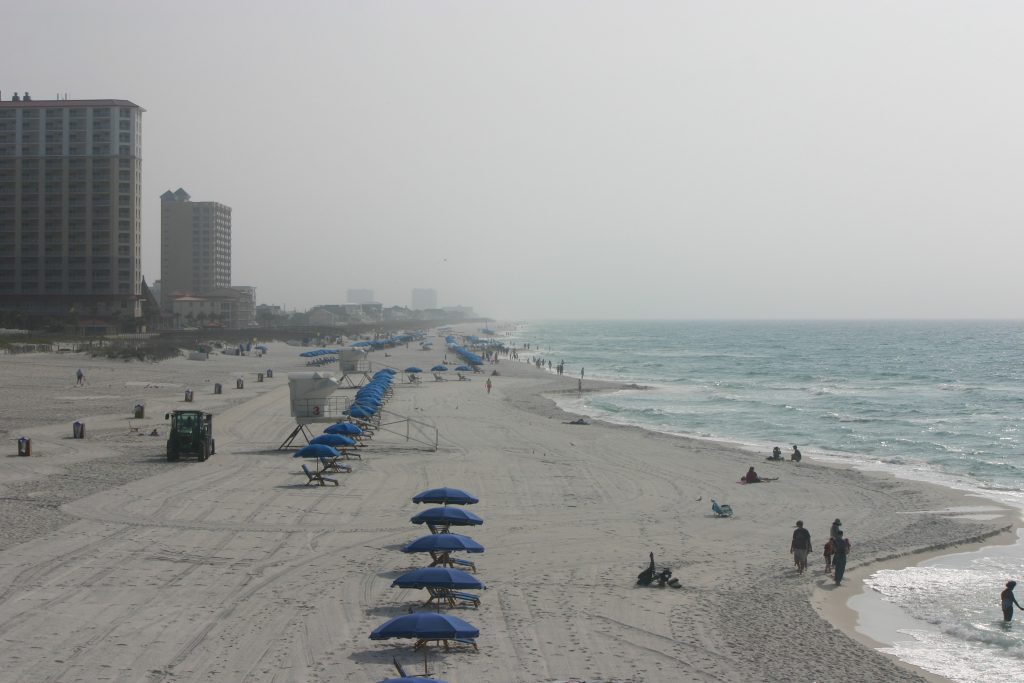
Recent news reports have Panhandle Beaches trending on social media. Beaches are open and ready for the holiday weekend. Here’s information to help make sure you are ready too. Photo by Florida Sea Grant.
The threat of bacteria in coastal waters can be scary and a challenge to understand. Here is information that helps clarify the threat to beach visitors and recreational users of marine waters. This is a good opportunity to think about bacteria exposure risks related to the coastal environment that we can control. It is important to remember the probability of severe illness in a normal healthy individual is very low.
There are two different un-related groups of bacteria species that often are cited in the news. One general group is fecal coliform and the other group are marine specific known as Vibrio.
Fecal coliform including Enterococci bacteria are used by public health managers as indicators of water quality. High levels of these bacteria can indicate an elevated health risk for beach visitors. For some individuals contact in impacted waters can result in gastrointestinal issues like nausea, vomiting, stomachache, diarrhea, headache or fever. Other symptoms might include rashes, sore throat, ear ache, and other cold-like or upper respiratory symptoms.
When “no-swimming” advisories are posted you can avoid these concerns by following warning and guidance information. Many times advisories are for specific locations due to storm run-off and water circulation patterns. If an area has a warning or is closed, usually there are better choices for swimming activities nearby. The Florida Department of Health has an established testing of many of Florida’s coastal swimming areas. The latest guidance information can be found at http://www.floridahealth.gov/environmental-health/beach-water-quality
On the other hand, Vibrio exposure that results in illness is potentially more severe. The US Centers for Disease Control and Prevention now estimate 80,000 Vibrio illnesses and 100 deaths occur annually in the United States. In perspective, The Clean Beaches Coalition estimates 180 million Americans annually make 2 billion visits to ocean, gulf and inland beaches.
According Georgia Sea Grant’s SafeOysters.org website and research, many Vibrio infections are not reported and usually do not cause serious or life-threatening illness in healthy people, although they may cause gastroenteritis (nausea, abdominal pain, vomiting, and/or diarrhea) or cellulitis (skin infection). For a Vibrio infection to occur there must be an entry point into the body. This usually is either through water entering an open wound or eating raw or undercooked seafood.
Symptoms of infection due to consumption of raw or undercooked seafood often develop in 12 to 48 hours and may include:
-
Fever/chills
-
Nausea/stomach pain/vomiting
-
Diarrhea
Individuals with weakened immune systems, chronic diseases or conditions, or undergoing certain medical treatments (see list below) are more susceptible to Vibrio vulnificus infections and are also more likely to become seriously ill or die from them. The fatality rate may be as high as 61% for Vibrio vulnificus infections in people that have been diagnosed with one or more of the following health conditions:
-
Liver disease (from cirrhosis, hepatitis, or cancer)
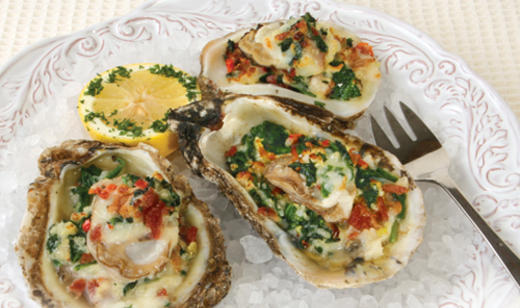
No need to feel left out! Fully cooked oyster dishes like Oysters Rockefeller are a coastal classic that’s safe and tastes great! Photo by Florida Department of Agriculture and Consumer Services.
-
Diabetes
-
Alcoholism
-
Kidney disease or failure
-
Cancer (includes lymphoma, leukemia, and Hodgkin’s disease)
-
HIV/AIDS
-
Stomach disorders including surgery, taking acid reflux medication or antacids
-
Hemochromatosis (iron overload disease)
* If you are unsure of your risk, consult your doctor. You can always indulge in great oyster recipes that are fully cooked like Oyster Rockefeller or oyster chowder.
Perhaps one of the most common group of listed individuals are those taking acid reflux or heartburn medications. This would also include antacids and prescription medications for acid reflux and other common digestive conditions. Many of these medications work by reducing acid which can potentially increase pH in the digestive system. This lowers the natural defense barrier to several foodborne bacteria including Vibrio. If you take these medications do not eat raw or under cooked seafood. If you have any question about your risk, consult your doctor.

An oysterman uses his 11 foot long tongs to collect oysters from the bottom of Apalachicola Bay
Photo: Sea Grant
As mentioned earlier, Vibrio can also enter the body through open wounds. Vibrio is sometimes misnamed as “flesh-eating” bacteria. “Flesh-eating” is not a medical term and was likely derived from the fact that tissue death, or necrosis, can occur during advanced, late stages of infection around a wound if it is left untreated, especially in those with weakened immune systems (Oliver 2005). The best advice is to seek medical attention early if you experience any of these symptoms or have suffered cut or puncture injury in coastal waters. (See Vibrio FAQs from UF/IFAS and Florida Sea Grant)
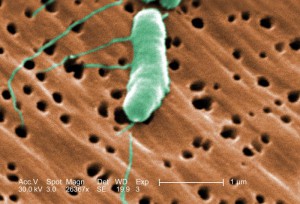
The rod-shaped bacterium known as Vibrio. Courtesy: Florida International University
Wound infection symptoms may develop within 3 to 24 hours and include:
-
Rapid swelling, pain, and reddening of skin around wound (present in 100% of infections)
-
Large blisters, die-off of tissue around wound (30 – 50% of infections)
-
Gangrene (<10%)
If Vibrio vulnificus infections are left untreated in people at risk for serious infection, symptoms may quickly increase in severity and include:
-
Fluid accumulation, especially in legs
-
Blood-filled large blisters, mainly on extremities
-
Septicemia (bacteria enter and spread through blood stream)
-
Shock (rapid drop in blood pressure)
-
Death
For additional information and details please visit SafeOysters.org
Here are some final thoughts and advice:
-
Remember the majority of healthy individuals will not have any problems.
-
If you are recovering from illness know your limits and use the above resources to make informed decisions to protect your health.
-
Plan your beach vacation for safety but then confidently relax and enjoy the experience.
-
For additional beach safety and enjoyment of our natural resources see our other articles on the UF/IFAS Panhandle Outdoors website.

A great blue heron at sunset stalks the shoreline ready for his next meal. Scenes like this await coastal visitors. It’s an experience like nowhere else. Photo by the author.
An Equal Opportunity Institution. UF/IFAS Extension, University of Florida, Institute of Food and Agricultural Sciences, Nick T. Place, dean for UF/IFAS Extension. Single copies of UF/IFAS Extension publications (excluding 4-H and youth publications) are available free to Florida residents from county UF/IFAS Extension offices.
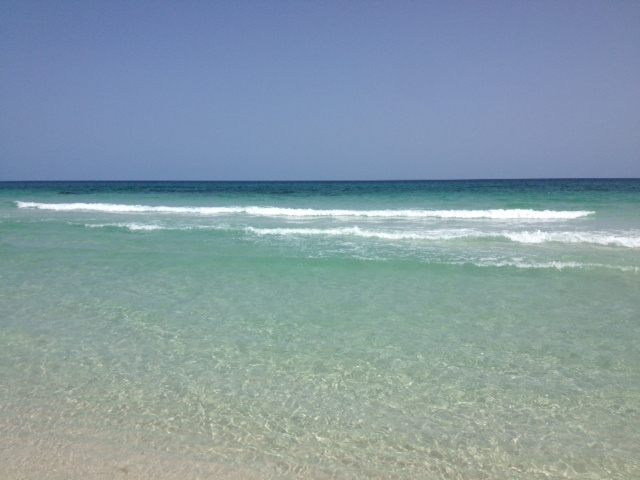
by Laura Tiu | Apr 22, 2016
The Deepwater Horizon (DWH) oil spill occurred about 50 miles offshore of Louisiana in April 2010. Approximately 172 million gallons of oil entered the Gulf of Mexico. Five years after the incident, locals and tourists still have questions. This article addresses the five most common questions.
QUESTION #1: Is Gulf seafood safe to eat?
Ongoing monitoring has shown that Gulf seafood harvested from waters that are open to fishing is safe to eat. Over 22,000 seafood samples have been tested and not a single sample came back with levels above the level of concern. Testing continues today.
QUESTION #2: What are the impacts to wildlife?
This question is difficult to answer as the Gulf of Mexico is a complex ecosystem with many different species — from bacteria, fish, oysters, to whales, turtles, and birds. While oil affected individuals of some fish in the lab, scientists have not found that the spill impacted whole fish populations or communities in the wild. Some fish species populations declined, but eventually rebounded. The oil spill did affect at least one non-fish population, resulting in a mass die-off of bottlenose dolphins. Scientists continue to study fish populations to determine the long term impact of the spill.
Question #3: What cleanup techniques were used, and how were they implemented?
Several different methods were used to remove the oil. Offshore, oil was removed using skimmers, devices used for removing oil from the sea’s surface before it reaches the coastline. Controlled burns were also used, where surface oil was removed by surrounding it with fireproof booms and burning it. Chemical dispersants were used to break up the oil at the surface and below the surface. Shoreline cleanup on beaches involved sifting sand and removing tarballs and mats by hand.
QUESTION #4: Where did the oil go and where is it now?
The oil spill covered 29,000 square miles, approximately 4.7% of the Gulf of Mexico’s surface. During and after the spill, oil mixed with Gulf of Mexico waters and made its way into some coastal and deep-sea sediments. Oil moved with the ocean currents along the coast of Texas, Louisiana, Mississippi, Alabama, and Florida. Recent studies show that about 3-5% of the unaccounted oil has made its way onto the seafloor.
QUESTION #5: Do dispersants make it unsafe to swim in the water?
The dispersant used on the spill was a product called Corexit, with doctyl sodium sulfosuccinate (DOSS) as a primary ingredient. Corexit is a concern as exposure to high levels can cause respiratory problems and skin irritation. To evaluate the risk, scientists collected water from more than 26 sites. The highest level of DOSS detected was 425 times lower than the levels of DOSS known to cause harm to humans.
For additional information and publications related to the oil spill please visit: https://gulfseagrant.wordpress.com/oilspilloutreach/
Adapted From:
Maung-Douglass, E., Wilson, M., Graham, L., Hale, C., Sempier, S., and Swann, L. (2015). Oil Spill Science: Top 5 Frequently Asked Questions about the Deepwater Horizon oil spill. GOMSG-G-15-002.
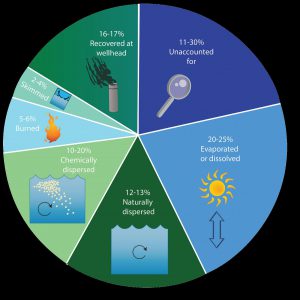
An estimate of what happened to approximately 200 million gallons oil from the DWH oil spill. Data from Lehr, 2014. (Florida Sea Grant/Anna Hinkeldey)
The Foundation for the Gator Nation, An Equal Opportunity Institution.
















